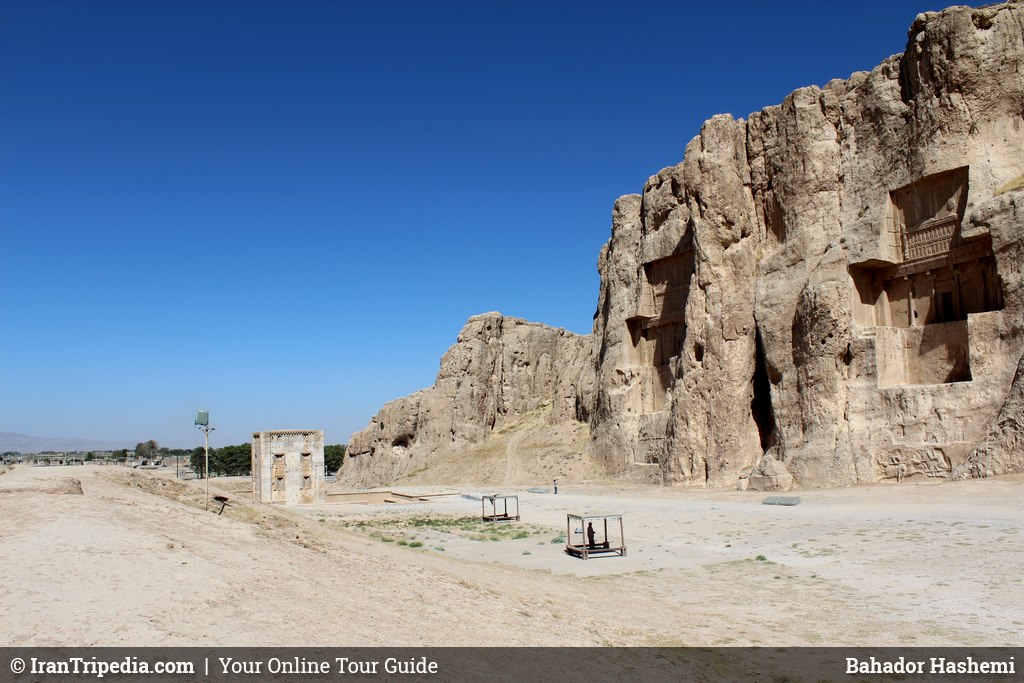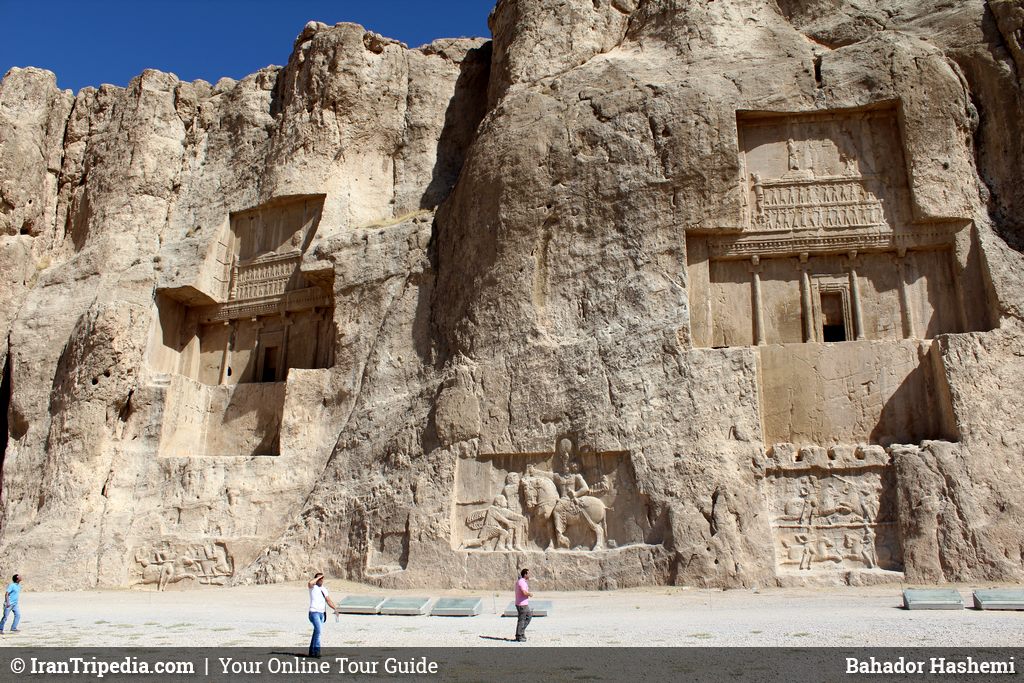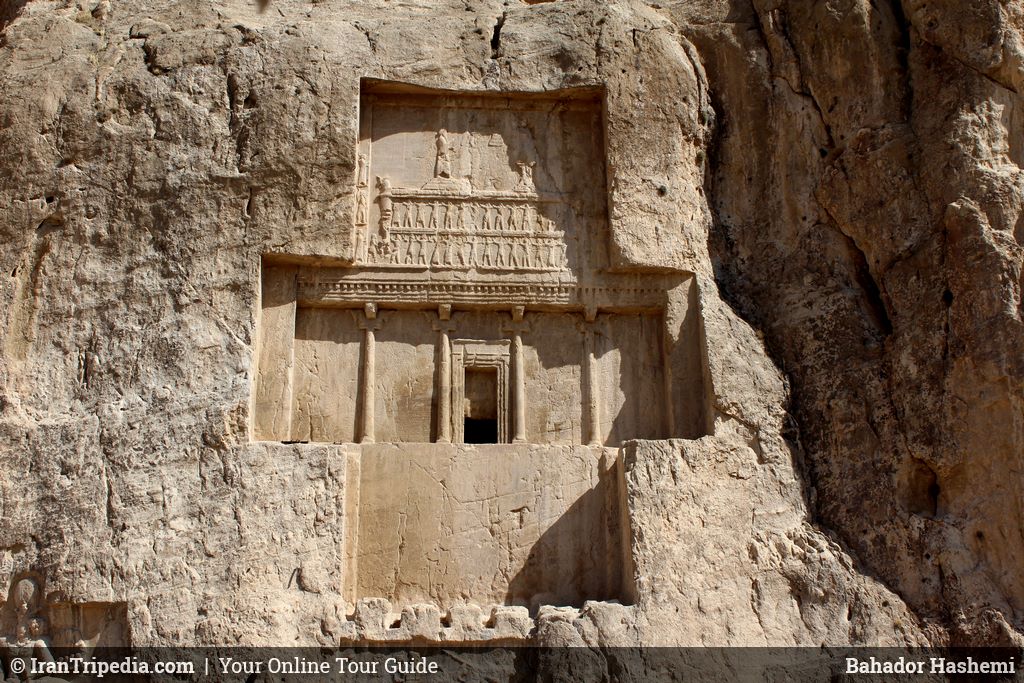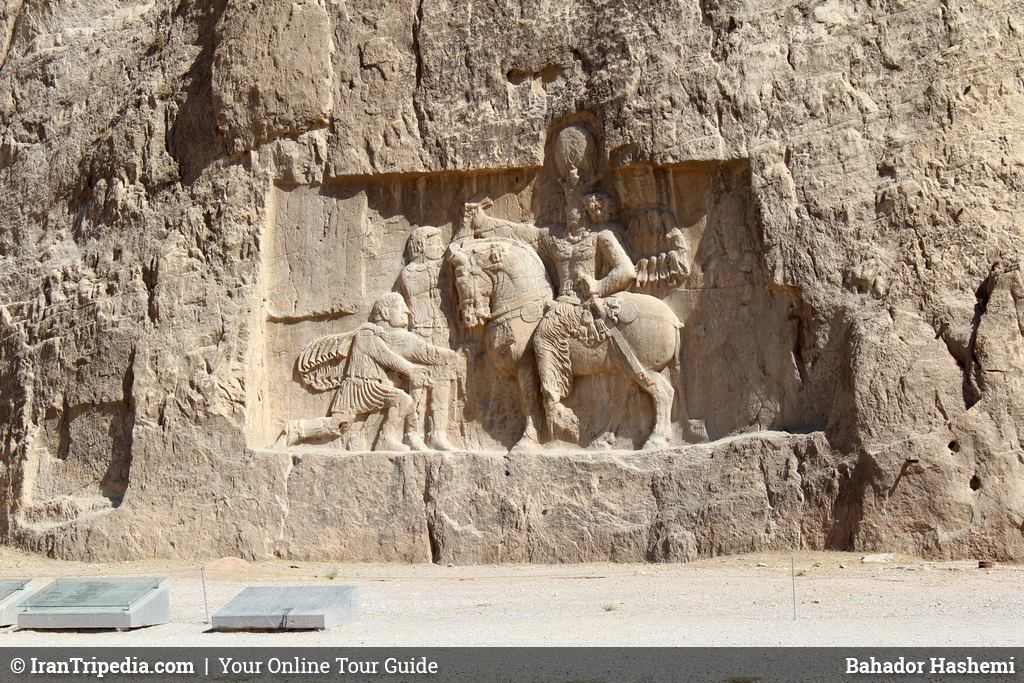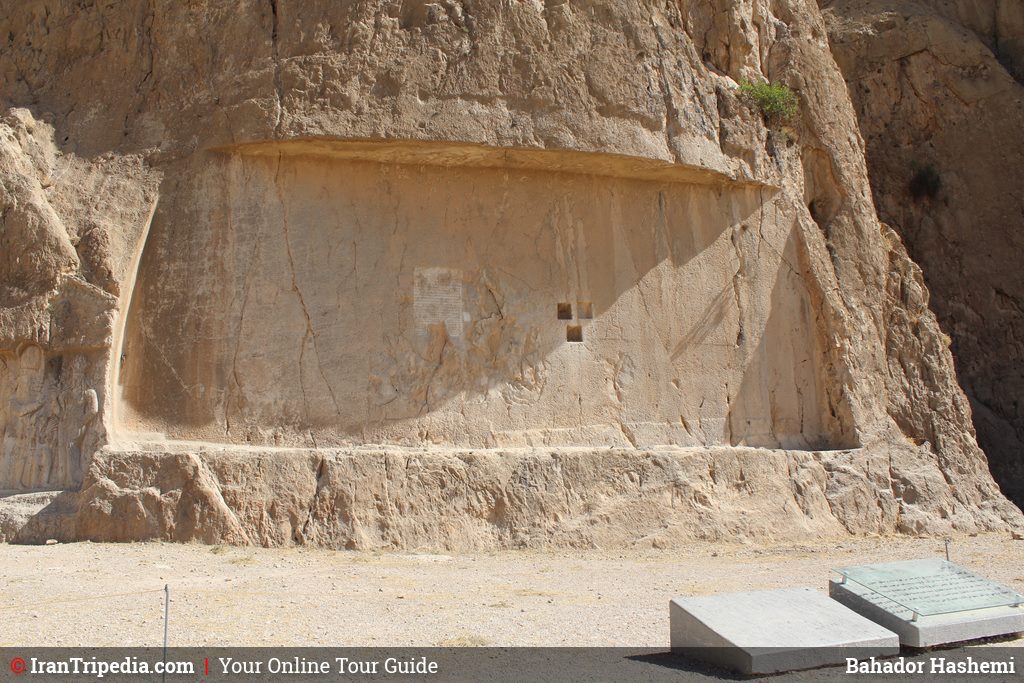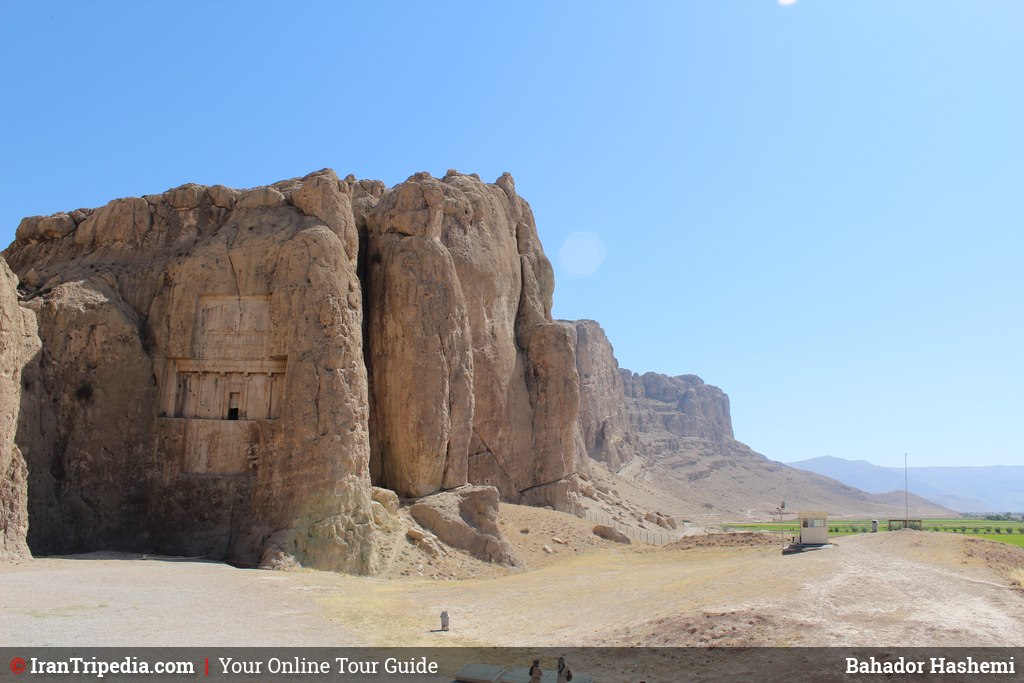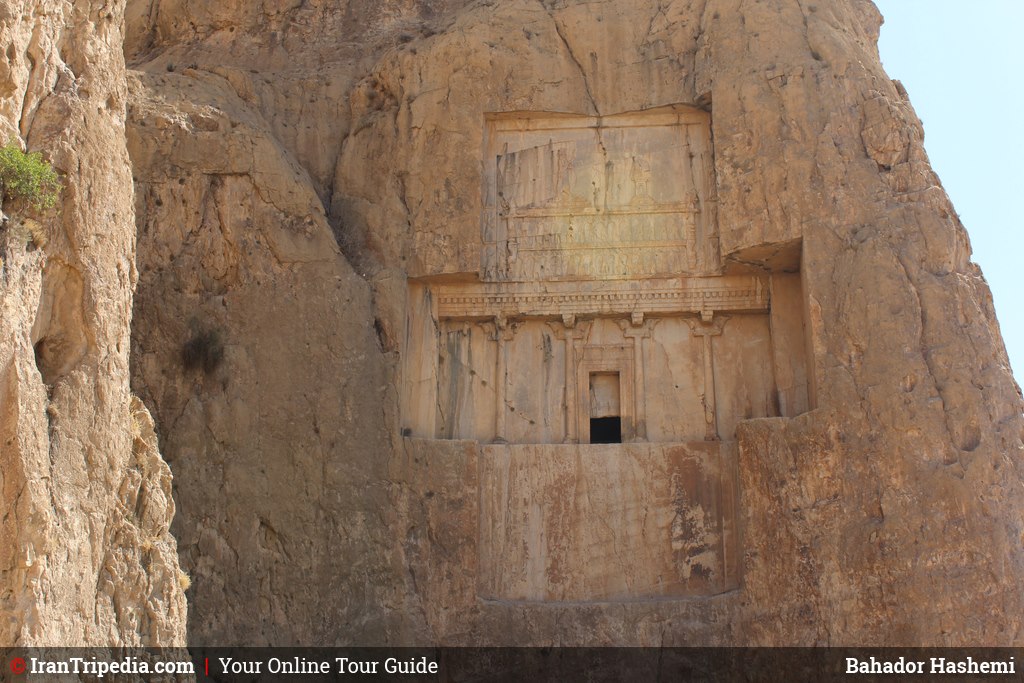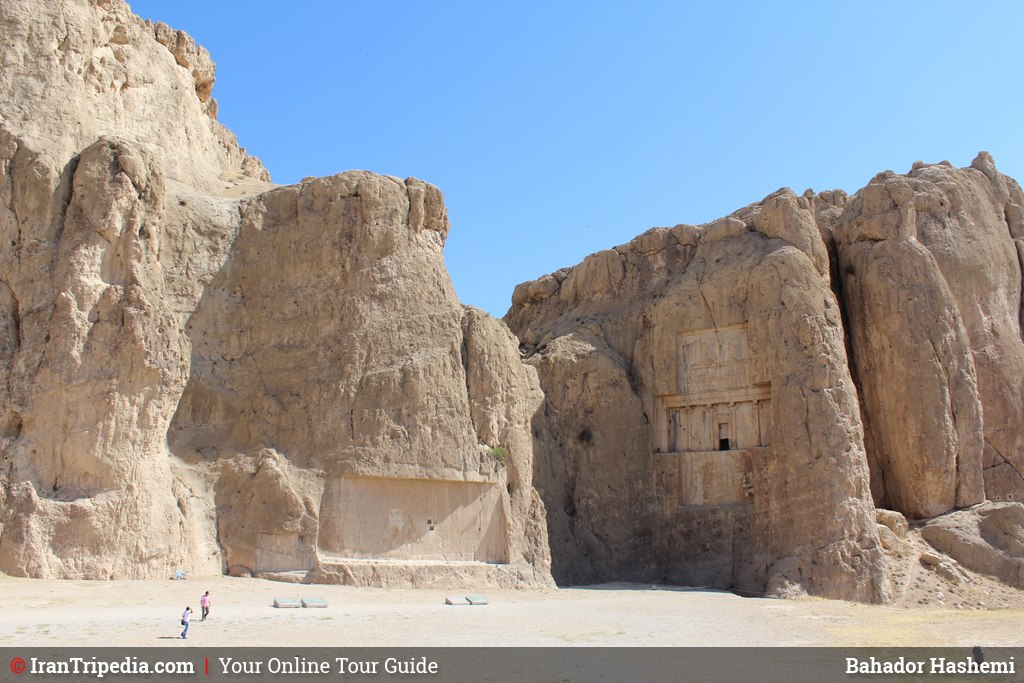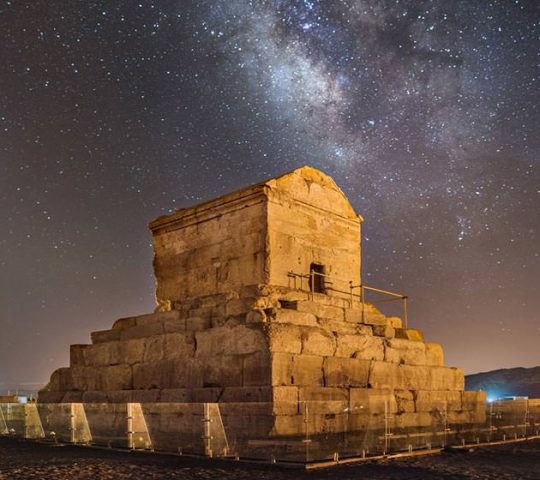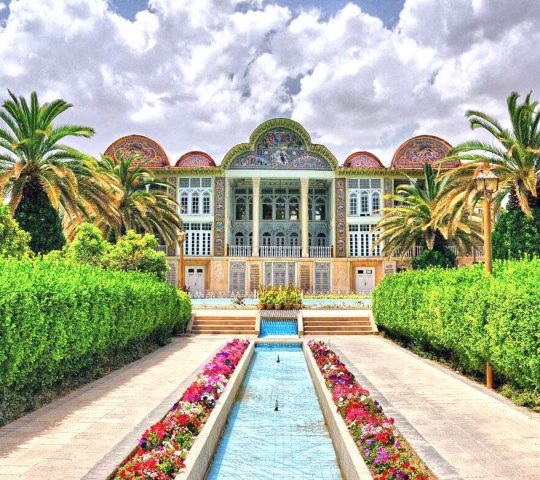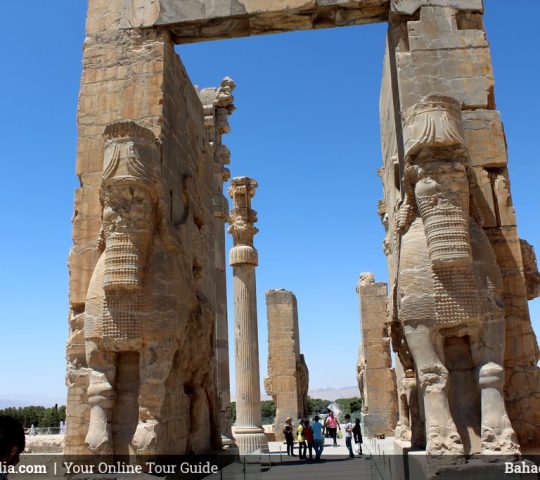Naqsh-e Rostam
Hightlight
-
 Car parking
Car parking -
 Entrance fee
Entrance fee
Naqsh-e Rostam is an archaeological site located about twelve kilometers northwest of Persepolis, in the province of Fars in Iran. It is a necropolis that contains a group of Iranian rock reliefs carved into the cliff, both from the Achaemenid and Sassanid times. It is a few hundred meters from Naqsh-e Rajab, which contains another added group of Sassanid reliefs.
History and structure
This site is called Naqsh-e Rostam, “the portrait of Rostam” because the Persians thought that the Sassanid bas-reliefs under the tombs represented Rostam, a Persian mythological hero. There are also seven large bas-reliefs on the rock of Naqsh-e Rostam, under the tombs, sculptures commissioned by the Sassanid kings. In front of the rock is Ka’be-ye Zartosht, a Zoroastrian monument. At the end of the site are also two small fire altars.
Naqsh-e Rostam is a rocky wall carved with four Achaemenid rupestrian royal tombs, cruciform, and bas-reliefs. One of them, according to the inscriptions it presents, would be the tomb of Darius I and the other three, on both sides of that of Darius I, would be those of Xerxes I, Artaxerxes I, and Darius II, although they do not have any inscription that allows to identify them with certainty. On the mountain behind Persepolis there are two other similar tombs, probably belonging to Artaxerxes II and Artaxerxes III, in addition to an unfinished tomb that could be that of Arses, or more surely of Darius III, the last king of the Achaemenid dynasty, who he was overthrown by Alexander III of Macedon.
The tomb of Darius is one of the two models of tombs of the Persian art of the Achaemenid period. It is a rock-cut tomb like the Egyptian hypogea; the other model is that of the tomb of Cyrus, in Pasargad. On May 22, 1997, the “Naqsh-e Rostam and Naqsh-e Rajab” complex was inscribed on the Tentative List of Iran – a step prior to being declared a UNESCO World Heritage Site – in the category of cultural property.
Archaeological excavations
In 1923, the German archaeologist Ernst Herzfeld made casts of the inscriptions on the tomb of Darius I. Since 1946, these casts have been held in the archives of the Freer Gallery of Art and the Arthur M. Sackler Gallery, Smithsonian Institution, in Washington, DC. Naqsh-e Rostam was excavated for several seasons between 1936 and 1939 by a team from the Oriental Institute of the University of Chicago, led by Erich Schmidt.

